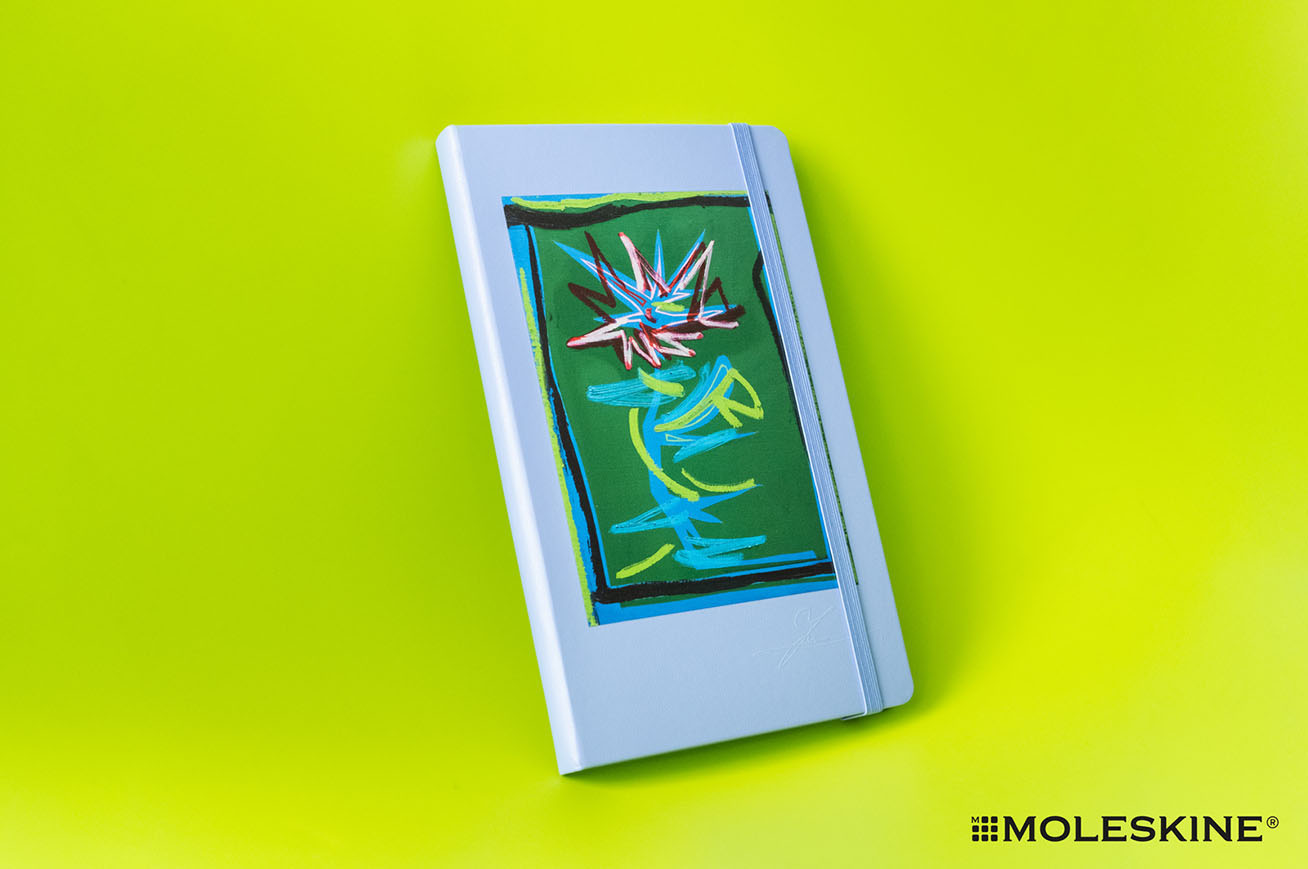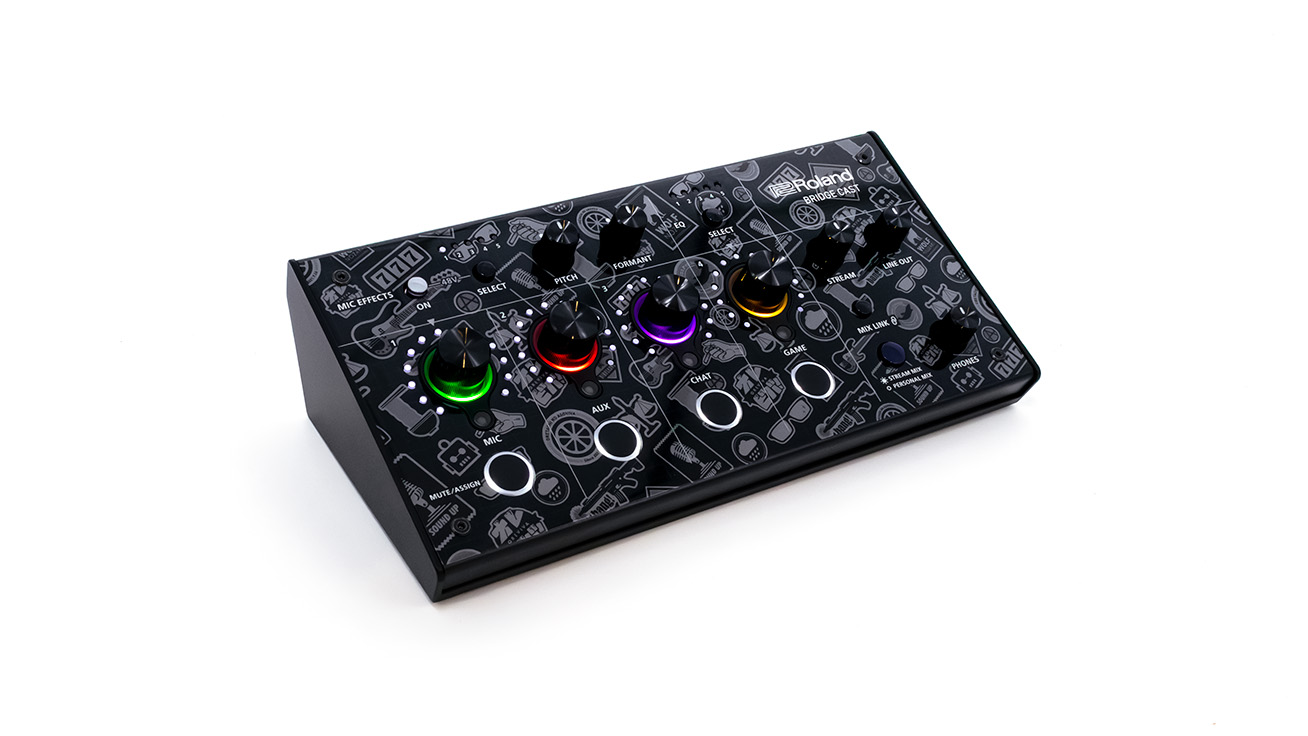Corporate News
08/18/2015
Roland DG Corporation
Roland DG Installs Medical Instrument Safety and Support System at Hamamatsu University School of Medicine
Hamamatsu, Japan, August 18, 2015 – Roland DG Corporation, a leading provider of direct part marking devices worldwide and renowned for its proprietary digitally-controlled cell production technology, announced that the company recently installed a medical instrument safety and maintenance support system at the Hamamatsu University Hospital of Hamamatsu University School of Medicine.
Selected by the Ministry of Economy, Trade and Industry (METI) among the "2014 Industry-Academia Evaluation and Pilot Projects," Roland DG's MPX-90M*1 medical instrument marking device and digital cell production system*2 combined with years of experience and knowledge are currently being harnessed to resolve issues within Hamamatsu University Hospital, including optimization of medical instrument management and raising the quality and efficiency of the disassembly, sanitation, sterilization and set up of medical instruments, and to build a model offering solutions to common issues experienced at all medical institutions.
"Our mission at the Hospital is to carry out sanitation management thoroughly and ensure patients' safety," said Naomi Ishino, technical expert in the medical equipment maintenance department of Hamamatsu University Hospital. "There are many issues arising as we try to fulfill this mission however. For example, the fact that there are so many medical instruments and devices that it is impossible to remember them all; the fact that each instrument is subject to specific procedures where any mistake could lead to tremendous repair costs; and the need to precisely and quickly prepare instruments required in more than 600 types of surgical operation sets. Previously, a learning period of at least two years was required in order to surmount such challenges and carry out all work on a periodic basis. Now, using the system developed with Roland DG, it is possible to standardize work for which there was previously reliance on workers' experience and know-how, which in turn reduces the amount of work dependent upon attentiveness and memory and greatly reduces the burden imposed on workers."
Yoshihiro Yazawa, manager of the DPM division, and Roland DG's supervisor of this project, states: "Just like Hamamatsu University Hospital, many medical institutions within Japan and overseas are looking for ways to confront and solve issues such as the medical instrument traceability and maintenance quality. By further researching and testing our system together with Hamamatsu University School of Medicine, we hope to accumulate the know-how required for practical use and implementation. By FY2018, we intend to establish a sales channel to provide a comprehensive solution for medical institutions worldwide."
The medical equipment maintenance department of Hamamatsu University Hospital requires management of a huge variety of medical instruments used in surgery, as well as standardization and optimization of the different disassembly, sanitation, sterilization and set up processes for each medical instrument. Issues faced include the difficulty in remembering all the names and uses of instruments, an excess of paper-based work manuals, and work processes that are too complicated. There are also concerns about the occurrence of human error such as variable work quality and mistakes in work processes. The difficulty in tracking accurate information on the numbers of medical instruments, their history of use and their lifetime has led to instruments/parts being lost or disposed of erroneously, or purchased in excess. Roland DG initiated the project in October 2014 with the aim of resolving such issues and, in March 2015, it established a network of work support systems comprising the MPX-90M, the MR-1 2D barcode reader to read markings, a medical instrument sanitation support system, and a medical instrument search/assembly support system to raise the quality and efficiency of medical instrument management and work processes and, at the same time, to provide a system that can ensure the safety of patients.
Please refer to the following summary of their respective results.
Main results in first year of project
-
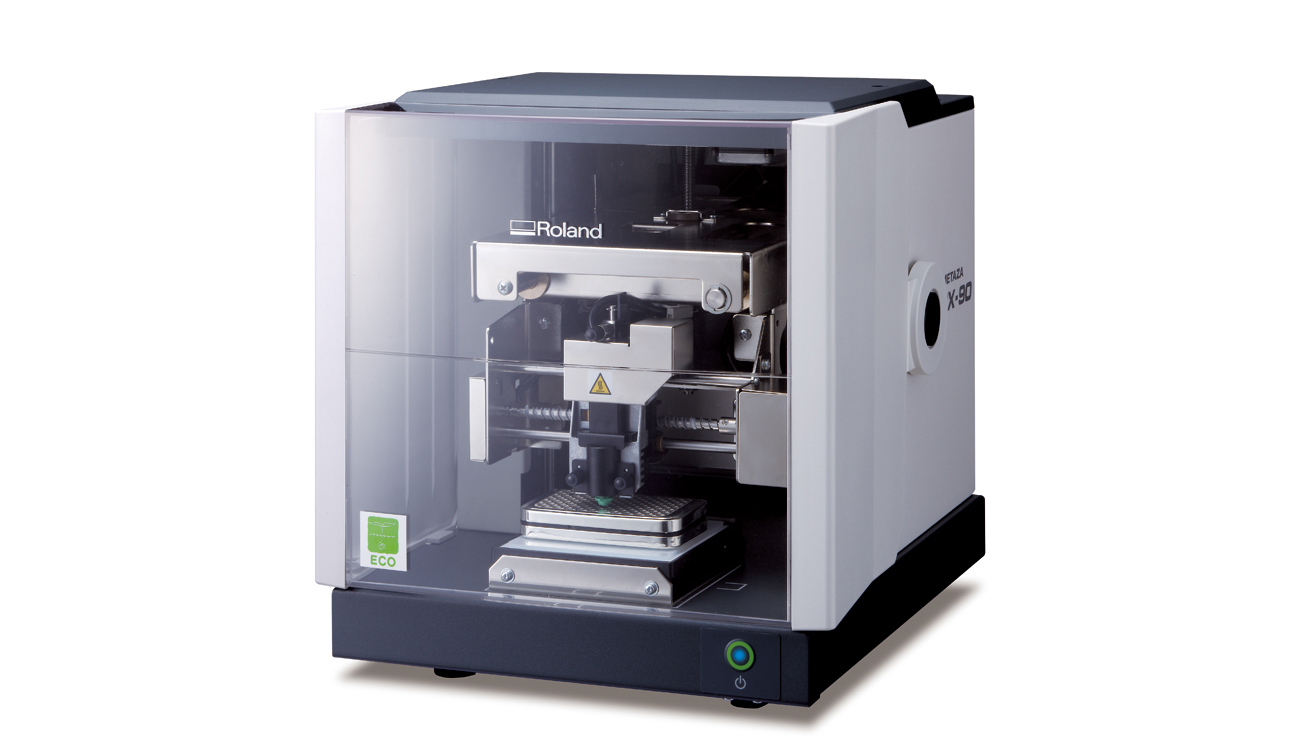
Installation of MPX-90M and marking of medical instruments
The MPX-90M is a desktop-size dot impact printer designed for the direct marking of medical instruments with serial numbers and 2D symbols that make tracking and traceability possible. In the first year of the project, marking was carried out for approximately 4,000 of the medical instruments managed at the medical equipment maintenance department of Hamamatsu University Hospital.
-
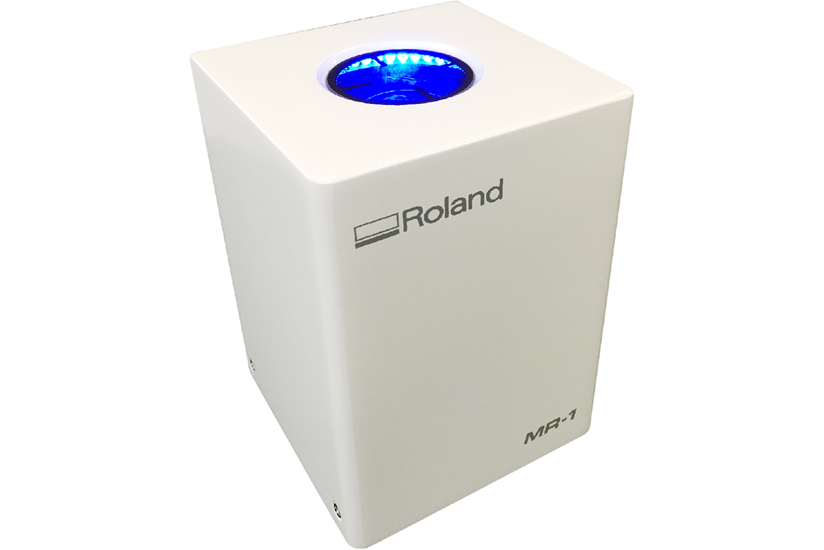
Development and installation of MR-1
The MR-1 is a barcode reader that reads serial numbers and 2D symbols marked with the MPX-90M. It was specially developed as a barcode reader for the MPX-90M, delivering a specification that can reliably read 2D symbols marked in accordance with the JAMDI (Japan Association of Medical Devices Industries) guidelines.
-
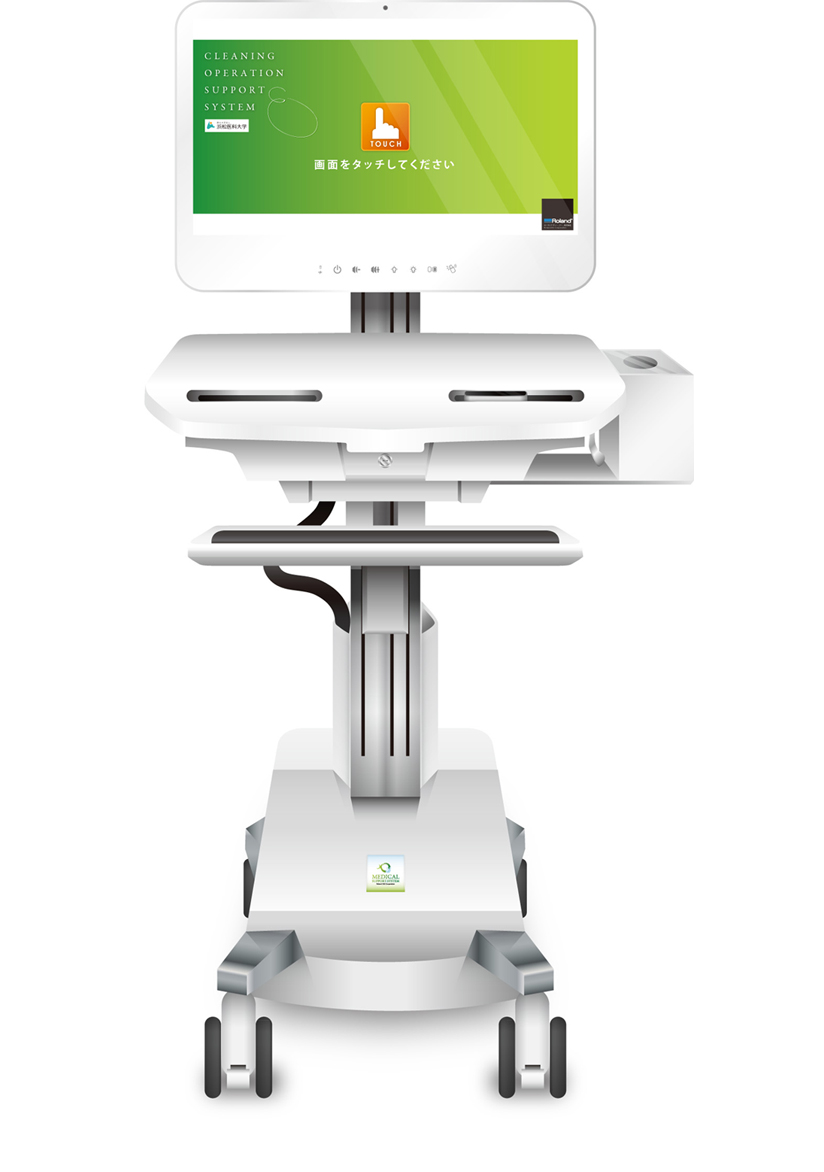
Development and installation of sanitation support system with digitizing working manuals
This digitally controlled sanitation support system for medical instruments was developed by applying digital cell production system installed and used at Roland DG’s production sites. Together with digitizing conventional paper-based working manuals, each process has been subdivided and images have been frequently used in order to produce digital manuals that anyone can easily understand. This has made it possible to standardize sanitation work that had been dependent on individual skills and prevent work quality from becoming variable.
-
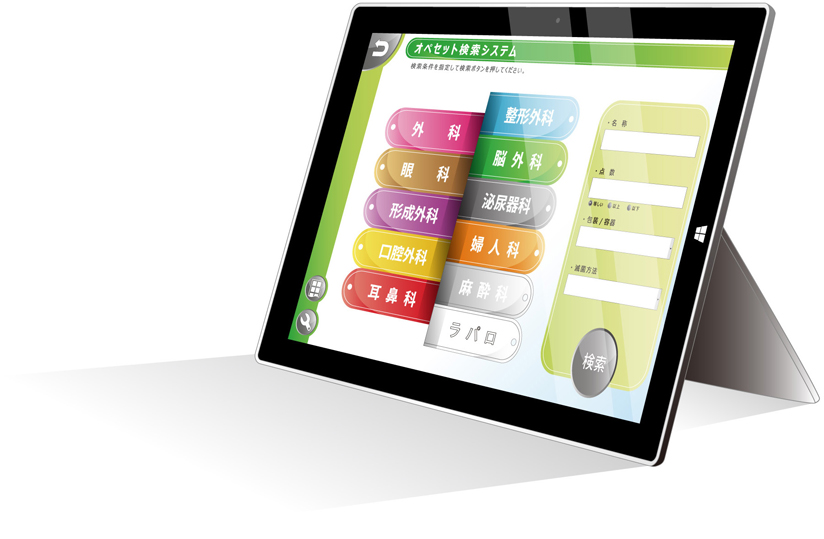
Development and installation of search and assembly support system for medical instruments with digitizing working manuals
Since a set of surgical instruments required when performing surgery differs depending on the part that is being operated on and the method applied, instruments which sanitation and sterilization has been completed must be provided again as a set to the operating room. There are more than 600 types of surgical operation set to be prepared, and it is an incredibly difficult task to select the necessary instrument from such a vast array. By digitizing these 600 paper-based assembling manuals, searches can be carried out by set name, subject of diagnosis and treatment, and numbers of instruments, and instructions can be searched based on 2D symbols marked on devices by linking with the MR-1 even if the user does not know the name or use of the instrument. Moreover, as the required instruments must be reliably picked out by moving around the shelves, tablet devices are adopted for their large screens, high resolution and excellent mobility.
-
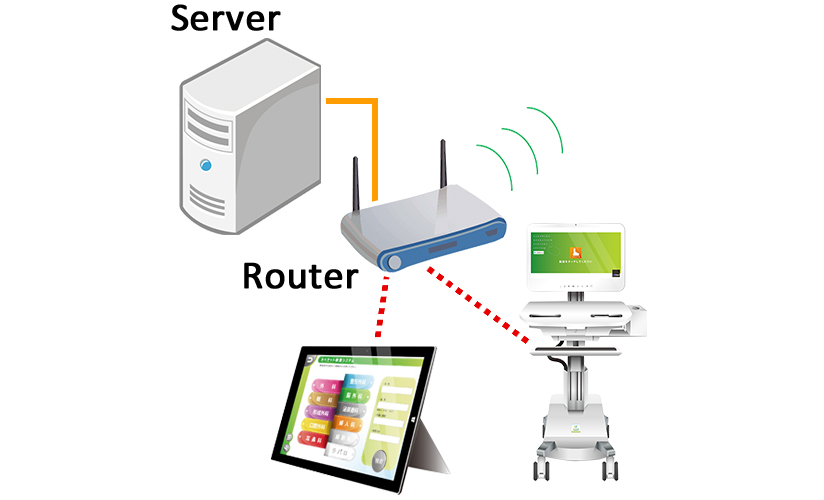
Construction of network of work support system
At Roland DG’s factories, work log data from each cell is stored on a central server, allowing the floor manager to see work progress at a glance and analyze data to find ways to not only improve workflow in individual cells, but optimize productivity for the entire factory. By applying this network environment and analysis system, it has become possible to establish a network connection between dedicated servers and sanitation support systems, and search and assembly support systems, synchronize the work instruction documents of different devices, and make improvements through management and analysis of work logs.
Project Background
In recent years, efforts have been increasing to review medical instrument safety and management procedures in order to reduce the risk of infection inside hospitals and ensure the safety of patients. A worldwide trend is materializing among regulatory bodies that seek to have a comprehensive management system for special instruments in use at medical facilities. In America, the FDA began an incremental launch of UDI (Unique Device Identification) Regulation in September of 2014, which requires marking identifiers on medical devices, and Europe and Asia are expected to adopt the same kinds of regulation within the next few years. In anticipation of these trends, Roland DG released the MPX-90M in 2012. The MPX-90M allows medical facilities as well as medical instrument manufacturers and suppliers worldwide to utilize a 2D symbol imprinted on each instrument to see a complete history of that tool, including available stock, location and times used. In addition, the adoption of proven digital work support systems currently in place at Roland DG factories are ideal for raising the level of quality and efficiency involving post-operation tasks. The disassembly, sanitation, sterilization and set up of medical instruments cover many situations highly dependent on the experience of the employee and include complicated maintenance work across a wide variety of surgical tools.
*1 About the MPX-90M
The MPX-90M is a desktop-size dot impact printer designed for the direct marking of medical instruments with UDI (Unique Device Identification) barcodes that make tracking and traceability possible. The MPX-90M quickly creates 2D DataMatrix barcodes to GS1* standards and imprints them with great precision on the surface of medical instruments in areas as small as one square millimeter. The machine uses dot pin marking to protect marked surfaces from erasure and corrosion. A vice secures the instrument while a laser pointer indicates the area to be marked, meaning that no special training is required.
* The GS1 DataMatrix is a standard for 2D symbols determined by the GS1 international body for barcodes, symbols and electronic data transfer, and it serves to give worldwide electronics manufacturers and medical facilities a way to display symbols on steel instruments. Information on item code, usage limits, lot number, serial number and more can be stored within 26 bytes and read using a special scanner.
*2 About digital cell production system
A proprietary cell-based (one person, one cell) production system developed and in use at Roland DG. Workers confirm each assembly task on an electronic display, receive the necessary parts from an automatic rotating rack and assemble using the indicated electronic screwdriver. Measures are in place to ensure the correct parts and screwdriver are used each step of the way, and product quality checks are run at the completion of each task to guarantee quality of work. Digital technology is utilized to complement human memory and focus and achieving the utmost in quality and productivity. Log data from each cell is stored on a central server, allowing the floor manager to see work progress at a glance and analyze data to find ways to not only improve workflow in individual cells, but optimize productivity for the entire factory.
- For more information, contact:
-
Toshiyuki Okino
+81 (0)53-484-1201
E-Mail:rdg-globalpr@rolanddg.co.jp

